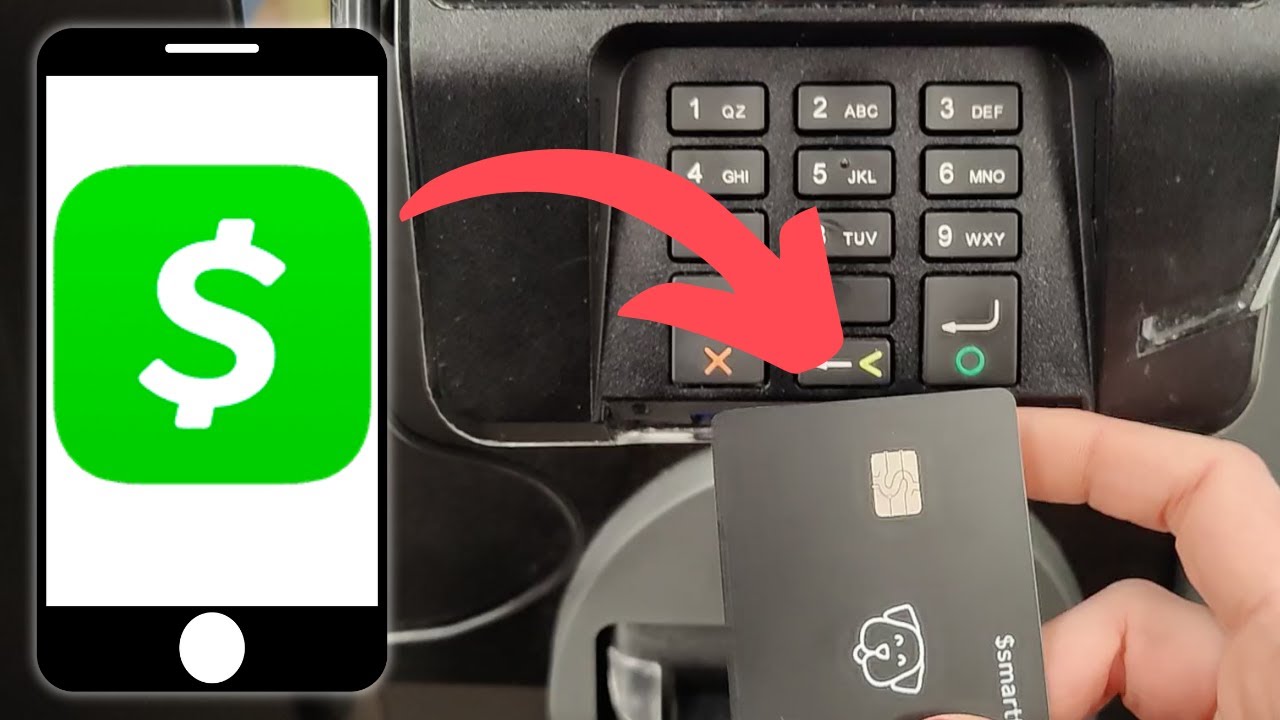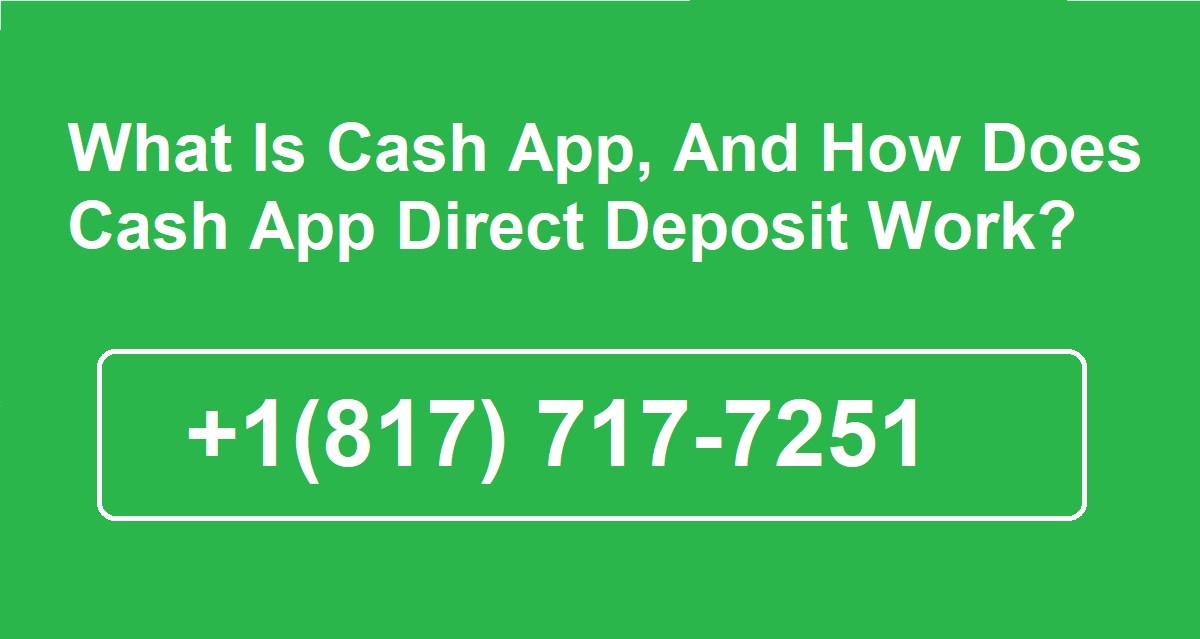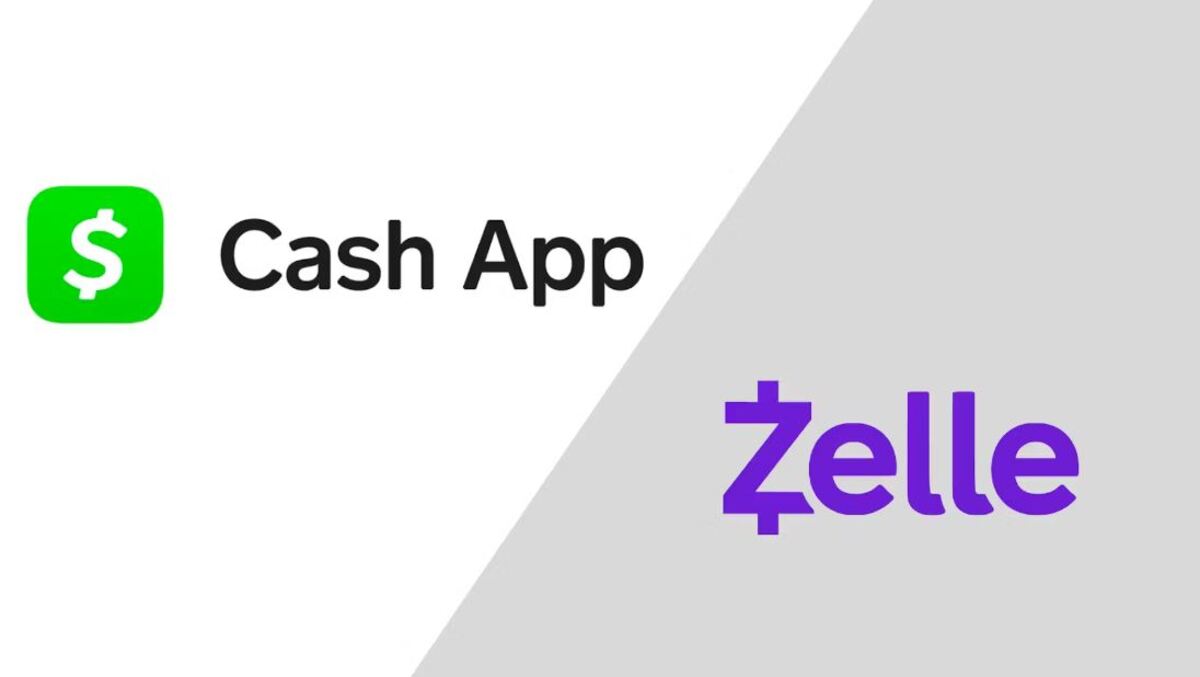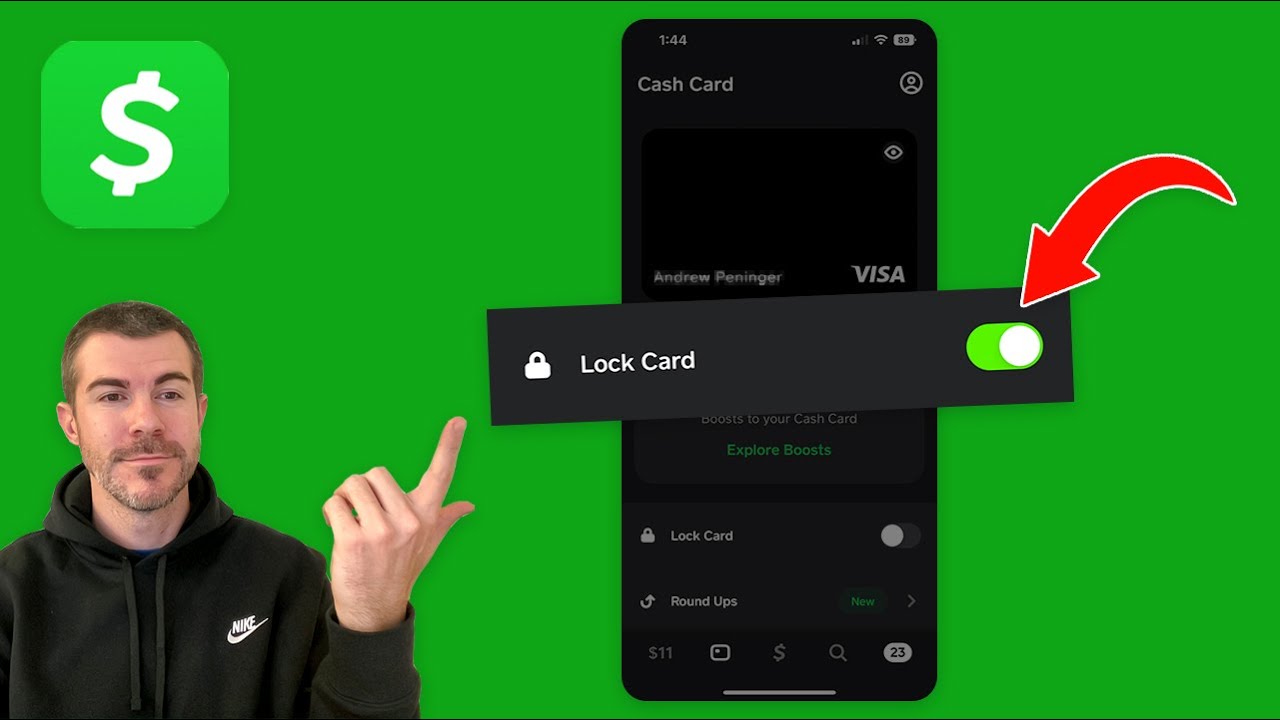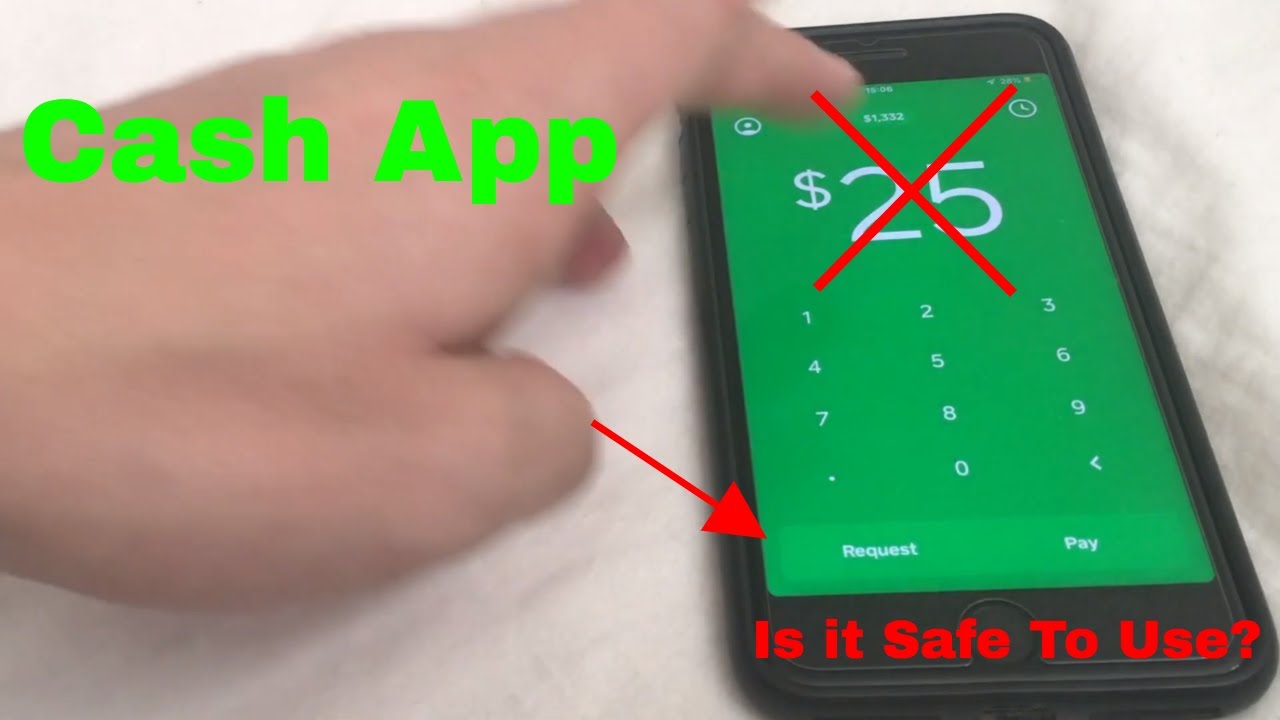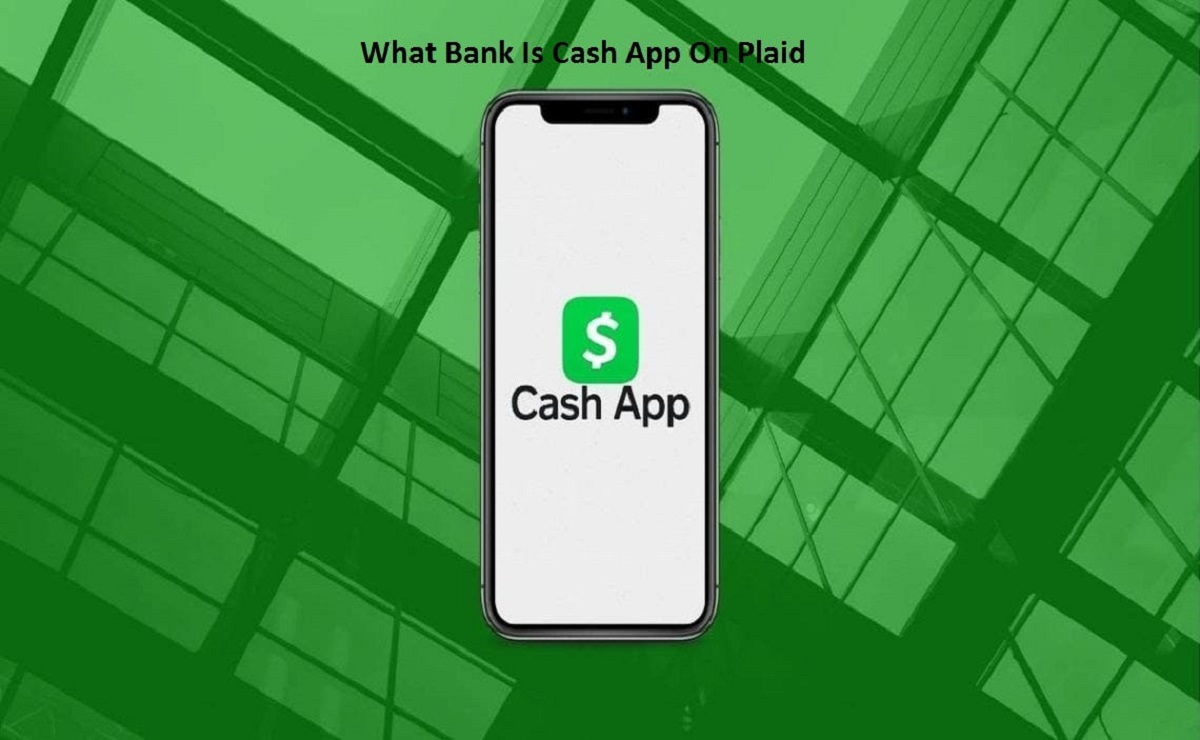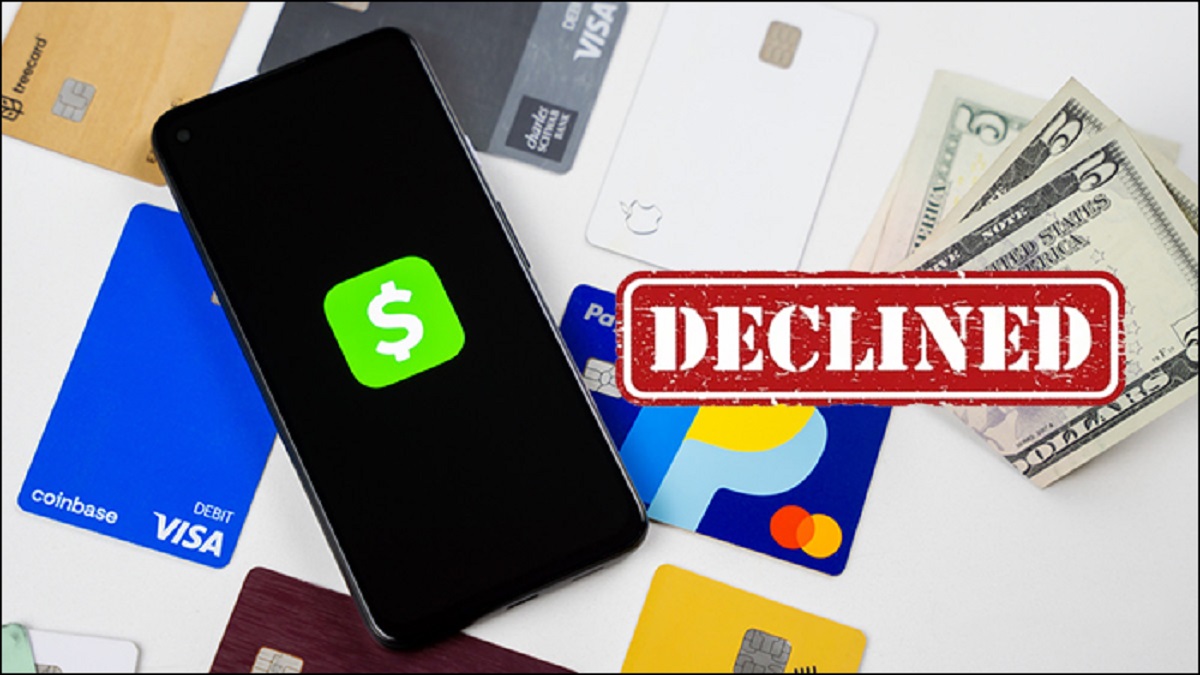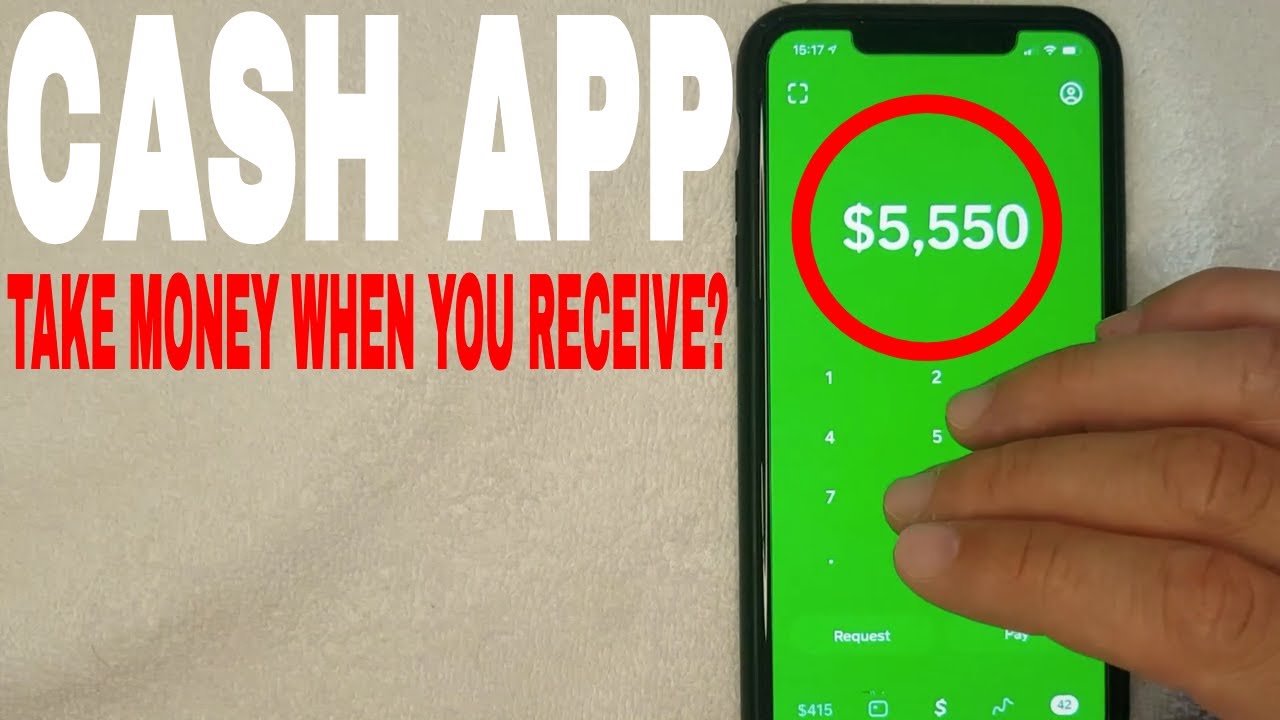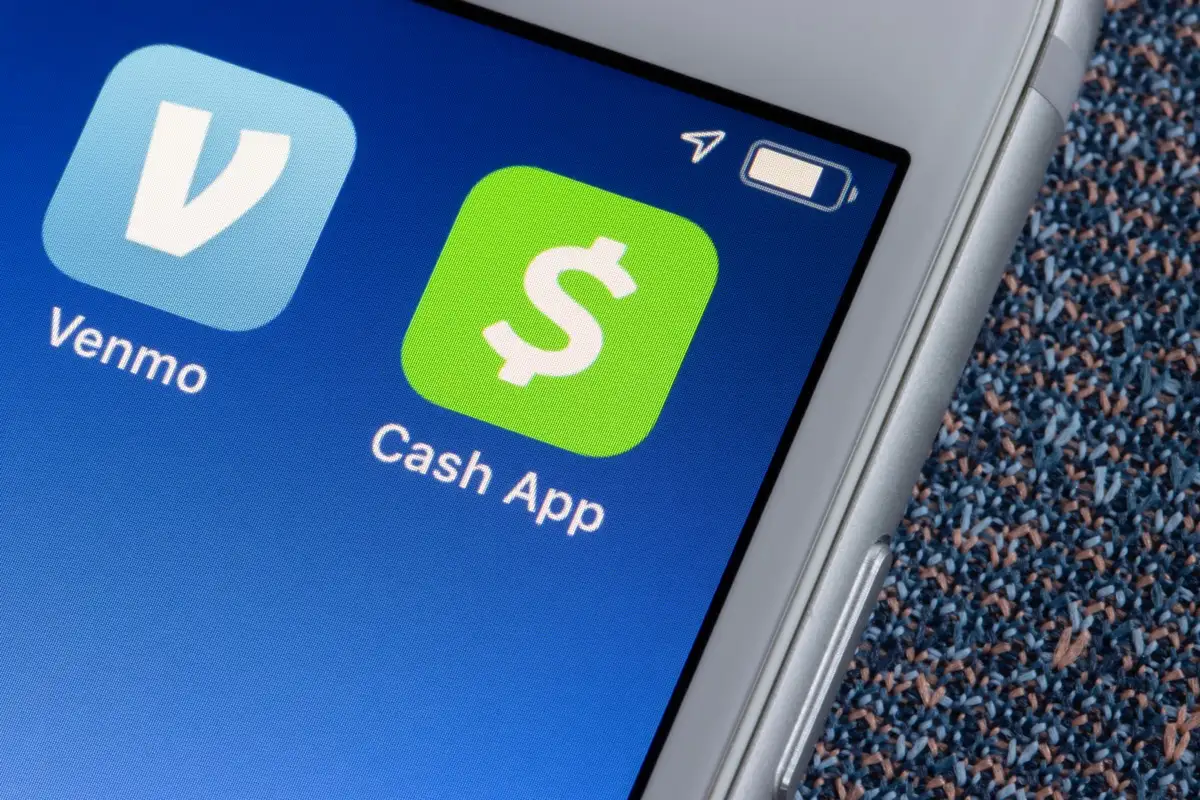Introduction
Welcome to this guide on the Cash App Card and how it works. In this digital age, financial transactions have become more convenient and accessible. With the Cash App Card, you can easily manage your money and make purchases without the need for physical cash or traditional credit cards. Whether you’re new to the world of digital payments or already familiar with popular mobile payment apps, the Cash App Card offers a range of features that can simplify your financial transactions.
The Cash App Card is a prepaid debit card that is linked to your Cash App account, a popular mobile payment service developed by Square Inc. It enables you to make purchases online and in-store, withdraw cash from ATMs, and transfer funds to other Cash App users. With the convenience of a physical card and the flexibility of digital payments, the Cash App Card has gained popularity among individuals looking for hassle-free money management.
In this guide, we will explore the various aspects of the Cash App Card, including how to obtain one, activating it, and making transactions. Additionally, we will delve into the fees associated with using the card and discuss the security features that protect your financial information. By the end of this guide, you will have a comprehensive understanding of how the Cash App Card works and how it can benefit you in your everyday financial transactions.
So, whether you’re interested in getting your own Cash App Card or simply want to learn more about this innovative financial tool, read on to explore how this card can help you manage your money with ease and convenience.
What is the Cash App Card?
The Cash App Card is a prepaid debit card that is linked to your Cash App account. It allows you to make purchases at both online and physical stores, withdraw cash from ATMs, and transfer money to other Cash App users. Essentially, it combines the convenience of a physical card with the flexibility of a digital payment platform.
When you sign up for a Cash App account, you have the option to order a Cash App Card. Once you receive the card, which is typically mailed to your registered address, you can activate it and start using it for your financial transactions.
The Cash App Card is designed to be user-friendly and accessible to all. Even if you don’t have a traditional bank account or credit card, you can still enjoy the benefits of making digital payments and managing your money with ease. The card can be used wherever Visa debit cards are accepted, making it widely accepted at various merchants and online retailers.
One of the key advantages of the Cash App Card is its simplicity. Unlike traditional credit cards, there are no complex applications, credit checks, or interest charges. The card works on a prepaid basis, meaning that you can only spend the funds available in your Cash App account, thus helping you stay in control of your expenses.
Additionally, the Cash App Card offers a range of features to enhance your financial management. This includes the ability to direct deposit your paycheck, enabling you to receive your salary directly into your Cash App account. You can also personalize your Cash App Card by adding a unique signature to the front of the card, giving it a personal touch.
Overall, the Cash App Card provides a convenient and accessible way to manage your money and make transactions in today’s digital world. It offers the perfect blend of a traditional payment card and a mobile payment app, making it a versatile and user-friendly option for individuals looking for a seamless financial experience.
How to get the Cash App Card
To get the Cash App Card, you will need to have a Cash App account. If you don’t have one yet, you can easily download the Cash App from the App Store or Google Play Store and sign up for an account. Once you have your Cash App account set up, you can follow these steps to get your Cash App Card:
- Open the Cash App on your smartphone and log in to your account.
- Look for the Cash Card icon at the bottom of the screen and tap on it.
- Next, tap the “Get Cash Card” option.
- You will then have the option to select the color of your Cash App Card. Choose the color that suits your preference.
- After selecting the card color, you will be asked if you want your unique $cashtag to appear on the front of your card. You can choose to include it or skip this step.
- Confirm your shipping information, including your name and mailing address.
- Review your information and tap the “Continue” button.
- Finally, you will be prompted to add a signature to the front of your Cash App Card. You can choose to skip this step or personalize your card by adding your unique signature.
- Once you have completed these steps, your Cash App Card will be ordered and sent to the address provided.
It’s important to note that there may be a waiting period before your Cash App Card is delivered, as it depends on the shipping and handling process. Once you receive your card in the mail, you can proceed to activate it and start using it for your financial transactions.
Getting the Cash App Card is a straightforward process, and with a few simple steps, you can enjoy the convenience and benefits it offers. Whether you’re making online purchases, paying bills, or sending money to friends and family, the Cash App Card provides a secure and versatile way to manage your finances seamlessly.
Activating the Cash App Card
Once you have received your Cash App Card in the mail, the next step is to activate it before you can start using it for your financial transactions. Activating the Cash App Card is a simple process that involves the following steps:
- Open the Cash App on your smartphone and log in to your account.
- Tap on the Cash Card tab located at the bottom of the screen.
- Next, tap the “Activate Cash Card” option.
- You will be prompted to use your smartphone’s camera to scan the QR code on the front of the Cash App Card. Align the camera with the QR code and wait for it to scan.
- If you have difficulty scanning the QR code, you also have the option to manually enter the CVV and expiration date printed on the back of the card.
- Once the QR code is scanned successfully or the information is entered correctly, your Cash App Card will be activated, and you can start using it for your transactions.
It’s important to note that if you have multiple Cash App Cards, you will need to activate each card individually following the same process. Additionally, activation may take a few moments, so it’s advisable to wait for the confirmation message before using your card.
By activating your Cash App Card, you gain access to the many features and benefits it offers. You can use it to make online and in-store purchases, withdraw cash from ATMs, and transfer money to family and friends who also have a Cash App account.
Activating your Cash App Card is a quick and easy process, ensuring that you can start using it for your financial transactions without any delay. Whether you’re shopping, dining, or sending money, the Cash App Card provides a convenient and secure way to manage your finances on the go.
Using the Cash App Card
Once you have successfully activated your Cash App Card, you can start using it for your financial transactions. The Cash App Card provides a convenient and versatile way to make purchases, access cash, and manage your money. Here are some key points to know about using the Cash App Card:
Making Purchases with the Cash App Card: You can use your Cash App Card to make purchases both online and at physical stores. Simply swipe or insert your card at the checkout, just like you would with a traditional debit card. The funds for your purchases are deducted directly from your Cash App account balance.
Adding Funds to the Cash App Card: Before you can make purchases with your Cash App Card, you need to add funds to your Cash App account. You can do this by linking your bank account or debit card to your Cash App and transferring funds. Alternatively, you can receive payments from others through the Cash App and use those funds to load your Cash App Card.
Making Withdrawals with the Cash App Card: The Cash App Card allows you to withdraw cash from ATMs. You can locate the nearest ATM by using the ATM locator feature in your Cash App. Keep in mind that there may be withdrawal limits set by both the ATM and the Cash App.
Transferring Money to Other Cash App Users: With the Cash App Card, you can easily send money to other individuals who also have a Cash App account. This can be useful for splitting bills, repaying friends, or sending money to family members. Simply enter the recipient’s $cashtag or their phone number or email associated with their Cash App account, and specify the amount you wish to send. The funds will be deducted from your Cash App Card balance and transferred to the recipient instantly.
Monitoring Transactions and Balances: The Cash App provides a user-friendly interface that allows you to track your transactions and check your account balance. You can view your transaction history, track your spending, and monitor your Cash App Card’s available balance, ensuring that you have full control over your finances.
The Cash App Card offers a convenient and accessible way to make purchases, access cash, and manage your money. By utilizing its various features, you can streamline your financial transactions and enjoy a seamless payment experience both online and offline.
Making Purchases with the Cash App Card
The Cash App Card allows you to make purchases conveniently and securely, both online and at physical stores. With the card in hand, you can enjoy the flexibility of digital payments without the need for physical cash or traditional credit cards. Here’s all you need to know about making purchases with the Cash App Card:
1. Online Purchases: When shopping online, look for websites or platforms that accept Visa debit cards. During the checkout process, select the option to pay with a debit card and enter your Cash App Card information. This typically includes the card number, expiry date, and CVV code, which can be found on the back of your card. Verify the transaction details and complete the purchase.
2. In-store Purchases: Making purchases at physical stores is just as simple with the Cash App Card. When you’re ready to pay, swipe your Cash App Card or insert it into the card reader, depending on the store’s payment system. If prompted, enter your PIN code to authorize the transaction. The funds will be deducted from your Cash App account balance, so make sure you have sufficient funds before making any purchases.
3. Contactless Payments: Some stores also offer contactless payment options, such as Apple Pay or Google Pay. To use your Cash App Card for contactless payments, link your Cash App account to your mobile wallet, and follow the instructions provided by your device’s payment app. Simply tap your device on the contactless card reader, and the payment will be processed.
4. Merchant Restrictions: Keep in mind that while most merchants accept Visa debit cards, there may be some exceptions or restrictions based on their individual policies. It’s always a good idea to confirm with the merchant beforehand if you have any concerns or questions.
5. Transaction Notifications: After completing a purchase, you will receive a notification on your Cash App indicating the transaction details, including the amount, merchant name, and date and time of the transaction. These notifications can help you keep track of your spending and maintain a record of your purchases.
By using the Cash App Card, you can enjoy the convenience and security of making purchases without the need for physical cash or carrying multiple cards. Whether you’re shopping online or in-store, the Cash App Card offers a seamless and user-friendly payment experience.
Adding Funds to the Cash App Card
To use your Cash App Card for purchases or withdrawals, you’ll need to ensure that you have funds loaded onto the card. Thankfully, adding funds to your Cash App Card is a straightforward process. Here’s how you can do it:
1. Linking a Bank Account or Debit Card: The most common way to add funds to your Cash App Card is by linking your bank account or debit card to your Cash App account. To do this, open the Cash App on your smartphone and navigate to your account settings. Look for the “Linked Accounts” or “Banking” section, then follow the prompts to link your account. Once linked, you can transfer funds from your bank account or debit card to your Cash App balance.
2. Receiving Payments: Another way to add funds to your Cash App Card is by receiving payments from others. If someone owes you money or wants to send you funds, they can do so through the Cash App. Once you receive the payment, the funds will be added to your Cash App balance, accessible for use with your Cash App Card.
3. Cash App Direct Deposit: If you receive a regular paycheck, you may also consider setting up Cash App Direct Deposit. This feature allows your employer to deposit your salary directly into your Cash App account. By opting for Cash App Direct Deposit, you can conveniently add funds to your Cash App Card without the need for manual transfers.
4. Cash App Cash Card Balance: Lastly, it’s important to note that the balance on your Cash App Card is separate from your Cash App Cash Card balance. The Cash Card balance is the amount of money available specifically for your Cash App Card transactions. You can transfer funds from your Cash App balance to your Cash Card balance within the Cash App settings.
Adding funds to your Cash App Card is quick and easy, giving you the flexibility to load the card with the necessary funds for your financial transactions. Whether you choose to link a bank account or debit card, receive payments, or set up direct deposit, the Cash App provides multiple options to ensure that you have a sufficient balance on your Cash App Card when you need it.
Making Withdrawals with the Cash App Card
The Cash App Card offers the convenience of accessing cash through ATMs, making it easy for you to make withdrawals whenever you need physical currency. Here’s what you need to know about making withdrawals with the Cash App Card:
1. Locate a Compatible ATM: When you need to make a cash withdrawal, look for ATMs that accept Visa debit cards. You can use the ATM locator feature within your Cash App to find the nearest compatible ATM in your area. It’s important to note that while the Cash App strives to provide accurate ATM information, availability may vary, and it’s always a good idea to confirm with the ATM provider directly.
2. Insert Your Cash App Card: At the ATM, insert your Cash App Card into the card slot. Make sure to follow the on-screen instructions and prompts provided by the ATM.
3. Enter Your PIN: To authenticate the withdrawal, you’ll need to enter your PIN (Personal Identification Number) associated with your Cash App Card. This ensures that only authorized individuals can access your funds.
4. Select the Amount: Once you’ve entered your PIN, the ATM will typically present you with different withdrawal amount options. Select the desired amount you wish to withdraw, or enter a specific amount if the option is provided.
5. Complete the Withdrawal: After confirming the withdrawal amount, the ATM will dispense the requested cash. Take the cash and any receipts provided by the ATM. It’s always a good idea to review your transaction details and ensure that the correct amount has been dispensed before leaving the ATM.
6. Withdrawal Limits: It’s important to note that both the ATM and the Cash App may have withdrawal limits in place. These limits can vary depending on various factors, including your account history and the specific terms and conditions associated with the ATM. Check the Cash App and ATM limits to ensure that your withdrawal amount falls within the allowed range.
Making cash withdrawals with the Cash App Card provides you with the convenience and flexibility to access physical currency when needed. Whether you’re in need of cash for everyday expenses or situations where card payments are not accepted, the Cash App Card allows you to conveniently withdraw money from ATMs, providing you with the financial freedom you desire.
Understanding Cash App Card Fees
Like any financial service, the Cash App Card comes with certain fees that users should be aware of. It’s important to understand these fees to ensure that you can effectively manage your finances. Here are some common fees associated with the Cash App Card:
1. Cash App Card Activation: While ordering the Cash App Card is free, you may be charged an activation fee when you first use the card. This fee is typically deducted from your Cash App account balance.
2. ATM Withdrawal Fees: When making cash withdrawals at ATMs, there may be fees associated with the transaction. These fees can vary depending on the specific ATM provider and the terms set by the Cash App. It’s recommended to review the fee schedule provided by the Cash App to understand the exact charges.
3. International Transaction Fees: If you use your Cash App Card for transactions in a currency other than the US dollar, you may be subject to currency conversion fees or international transaction fees. These fees are typically a small percentage of the transaction amount and may vary depending on the specific transaction.
4. Cash Reload Fees: If you choose to add funds to your Cash App Card through certain retail locations or third-party services, there may be cash reload fees involved. These fees can vary depending on the specific location or service provider you choose to reload your card.
5. Replacement Card Fees: In the event that your Cash App Card is lost, stolen, or damaged, you may need to request a replacement card. A fee may be charged for obtaining a replacement card, ensuring the security and delivery of your new card.
6. Cash App Instant Transfers: While not directly related to the Cash App Card, it’s worth mentioning that the Cash App offers an Instant Transfer feature that allows you to transfer funds from your Cash App balance to an external debit card instantly. However, there may be fees associated with using this Instant Transfer feature, depending on the transaction amount and speed of transfer desired.
It’s important to regularly review the Cash App fee schedule to stay informed about any changes or updates to the fees associated with the Cash App Card. By understanding the fees involved, you can effectively manage your finances and minimize any unnecessary expenses.
Security Features of the Cash App Card
The Cash App Card prioritizes the security of your financial transactions and personal information. It incorporates various security features to ensure the safety and integrity of your funds. Here are the key security features of the Cash App Card:
1. Card Activation: The Cash App Card requires activation before it can be used. This activation process verifies your identity and ensures that you are the rightful owner of the card.
2. Personal Identification Number (PIN): To prevent unauthorized use of your Cash App Card, you can set a Personal Identification Number (PIN). The PIN is required for making purchases, withdrawing cash from ATMs, and accessing your account information.
3. Transaction Notifications: The Cash App provides real-time transaction notifications for each purchase made with your Cash App Card. These notifications alert you of any transactions, allowing you to quickly identify and report any unauthorized activity.
4. Security Alerts: Cash App offers security alerts to help protect your account. These alerts notify you of potential suspicious activity, such as multiple failed login attempts or changes to your account information. If you receive any security alerts, it’s crucial to take immediate action to secure your account.
5. Two-Factor Authentication (2FA): In addition to your PIN, Cash App offers optional Two-Factor Authentication (2FA) for added security. With 2FA enabled, you’ll need to provide a unique verification code in addition to your regular login credentials when accessing your account.
6. Card Replacement: In the event that your Cash App Card is lost or stolen, you have the ability to report it and request a replacement. This ensures that your card cannot be used by unauthorized individuals, protecting your funds and personal information.
7. Cash App Balance Protection: The Cash App separates your Cash App Card balance from your primary Cash App balance. This division helps safeguard your funds by ensuring that only the balance specifically assigned to your Cash App Card can be used for transactions.
8. SSL Encryption: Cash App employs industry-standard SSL encryption to protect your personal and financial information during transactions. This encryption protocol ensures that your data is securely transmitted over the internet, reducing the risk of interception or unauthorized access.
By incorporating these security features, the Cash App Card aims to provide you with a safe and secure financial experience. However, it’s important to remain vigilant and take necessary precautions to protect your Cash App account and card information. Regularly monitor your transactions, keep your PIN secure, and promptly report any suspicious or unauthorized activities to the Cash App support team.
Conclusion
The Cash App Card offers a convenient and flexible way to manage your finances in today’s digital world. With its range of features, including making purchases online and in-store, withdrawing cash from ATMs, and transferring money to other Cash App users, the Cash App Card provides a seamless and user-friendly payment experience. By activating and using the Cash App Card, you can enjoy the convenience of a physical card combined with the flexibility of digital payments.
Obtaining the Cash App Card is a simple process, requiring you to have a Cash App account and following a few steps to order and activate the card. Once activated, you can load funds onto the card through various methods, such as linking your bank account or receiving payments from others. With funds on your Cash App Card, you can make purchases online and in-store, withdraw cash from ATMs, and send money to friends and family who also have a Cash App account.
It’s important to understand the fees associated with the Cash App Card, including card activation fees, ATM withdrawal fees, international transaction fees, and cash reload fees, among others. These fees can vary, so regularly reviewing the fee schedule provided by the Cash App can help you manage your finances effectively and minimize any unnecessary expenses.
The Cash App Card prioritizes security and incorporates various measures to protect your funds and personal information. Features such as card activation, PIN protection, transaction notifications, and Two-Factor Authentication (2FA) help ensure the safety of your financial transactions. Additionally, SSL encryption provides a secure channel for transmitting your data over the internet.
Overall, the Cash App Card offers a convenient, secure, and user-friendly way to manage your money. Whether you’re making purchases, withdrawing cash, or sending money to others, the Cash App Card provides unparalleled convenience and flexibility in today’s digital payment landscape. Consider getting your own Cash App Card to experience the benefits of seamless digital transactions and effortless money management.







